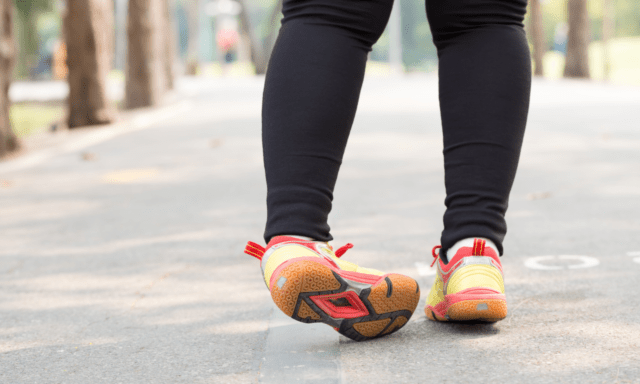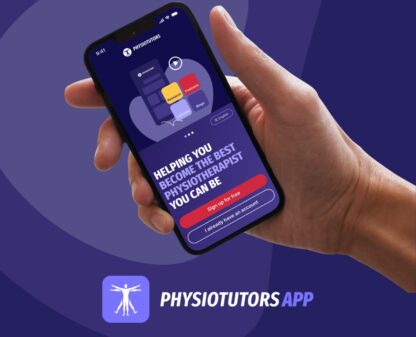Chronic Ankle Instability

Body Chart

Around talocrural joint; either more lateral or more medial
Background Information
Patient Profile
- Previous ankle distortion (inversion trauma 85%)
- Athlete
- Prevalence 20-40% after acute distortion
- Female > male
- Young > adult
Pathophysiology
Trigger
- Relapsing ankle distortion
- Poorly managed ankle inversion trauma
Cause
- Mechanical instability: Ligamentous laxity, bony abnormalities of tibiotarsal complex, limited ROM in dorsiflexion
- Functional instability
- Muscular impairment: Golgi-tendon-apparatus, muscle spindle;
- Joint impairment:neuromuscular spindle, Ruffini receptors, Pacini bodies, chronic synovitis
- Relapsing distortion: Develops due to mechanical and/or functional instability
Pain Mechanisms
- Peripheral mechanical nociceptive: localized pain, load dependent, on/off behavior, ROM limitation in one direction
- Peripheral neurogenic: Loss of strength & function, feeling of instability
- Output: Balance problems, “giving way”, ROM limitation, swelling
Tissue Mechanisms
Tissue healing mechanisms surpass tissue healing phases. Instability due to mechanical or functional cause. Relapsing distortion trauma can start tissue healing mechanisms over and over leading to instability and increased pain
Course
Good prognosis for conservative management of six weeks in functional instability, prognosis increasingly worse in mechanical instability, m. peroneus weakness or proprioceptive deficits, poor long term prognosis without treatment.
History & Physical Examination
History
History of multiple ankle distortions: often inversion trauma. Long history (months – 1 year). Has had treatment(s) including physiotherapy
- Localized pain
- Dull to stinging
- Deep
- Stiff
- Swelling
- Instability
- “Giving way”
- Loss of strength/function
- Proprioceptive difficulties
Physical Examination
Inspection & Palpation
Gait changes, weight shift, malalignment during weight bearing, valgus-/varus deformity depending on medial or lateral injury, possible swelling
Active Examination
Strength: fibularis longus/brevis, gluteus medius; limited dorsiflexion AROM
Functional Assessment
Single-leg stance, jumping, skipping, sport-specific movements, step up/down, mini-squat
Special Testing
Neurological
Sensory and motor disturbances possible
Passive Examination
Limited dorsiflexion PROM, subtalar/talocrural/tibiofibular hypermobility
Further Testing
SLR with differentiation for n. peroneus/tibialis can be positive. Always assess in ankle distortion
Differential Diagnosis
- General
- Fracture: talus, fibula, tibia, tarsals
- Ligament rupture
- Tarsal dislocation
- Syndesmosis rupture
- Osteochondral lesion
- Subchondral damage
- Deep vein thrombosis
- Functional Instability
- CRPS
- Tendon injuries
- Arthritis
- Osteophytes, cartilage damage
- Sinus tarsi syndrome
- Soft tissue impingement
Treatment
Strategy
Conservative over surgical. Patient education. Manual Therapy. Taping. Regaining balance and alignment. Functional Training. Sports specific exercises.
Interventions
Patient education: Prognosis, cause and source of problem
Manual therapy: Passive mobilizations grade III in dorsiflexion, mobs/manip of fibula
Tape/brace: Stabilize arch in the beginning and especially during activities
Alignment: Train proprioception, intrinsic foot muscle training
Balance: Postural control; change support surface, visual control
Functional/sport specific training
References
- Bonnel, F., Toullec, E., Mabit, C., Tourné, Y., Sofcot. (2010). Chronic ankle instability: biomechanics and pathomechanics of ligaments injury and associated lesions. Orthop Traumatol Surg Res, 96(4), 424-432.
- Chan, K. W., Ding, B. C., Mroczek, K. J. (2011). Acute and chronic lateral ankle instability in the athlete. Bull NYU Hosp Jt Dis, 69(1), 17-26.
- Cruz-Díaz, D., Lomas Vega, R., Osuna-Pérez, M. C., Hita-Contreras, F. Martínez-Amat, A. (2014). Effects of joint mobilization on chronic ankle instability: a randomized controlled trial. Disabil Rehabil, 1-10.
- Halasi, T., Kynsburg, A., Tállay, A., Berkes, I. (2004). Development of a new activity score for the evaluation of ankle instability. Am J Sports Med, 32(4), 899-908.
- Hertel, J. (2002). Functional Anatomy, Pathomechanics, and Pathophysiology of Lateral Ankle Instability. J Athl Train, 37(4), 364-375.
- Hiller, C. E., Kilbreath, S. L., Refshauge, K. M. (2011). Chronic ankle instability: evolution of the model. J Athl Train, 46(2), 133-141.
- Hintermann, B., Valderrabano, V., Boss, A., Trouillier, H. H., Dick, W. (2004). Medial ankle instability: an exploratory, prospective study of fifty-two cases. Am J Sport Med, 32(1), 183-190.
- Hoch, M. C., McKeon, P. O. (2011). Joint mobilization improves spatiotemporal postural control and range of motion in those with chronic ankle instability. J Orthop Res, 29(3), 326-332.
- Valderrabano, V., Leumann, A., Pagenstert, G., Frigg, A., Ebneter, L., Hintermann, B. (2006). Chronic ankle instability in sports — a review for sports physicians. Sportverletz Sportschaden, 20(4), 177-183.
- Verhagen, E., van der Beek, A., Twisk, J., Bouter, L., Bahr, R., van Mechelen, W. (2004). The effect of a proprioceptive balance board training program for the prevention of ankle sprains: a prospective controlled trial. Am J Sports Med, 32(6),1385-1393.


